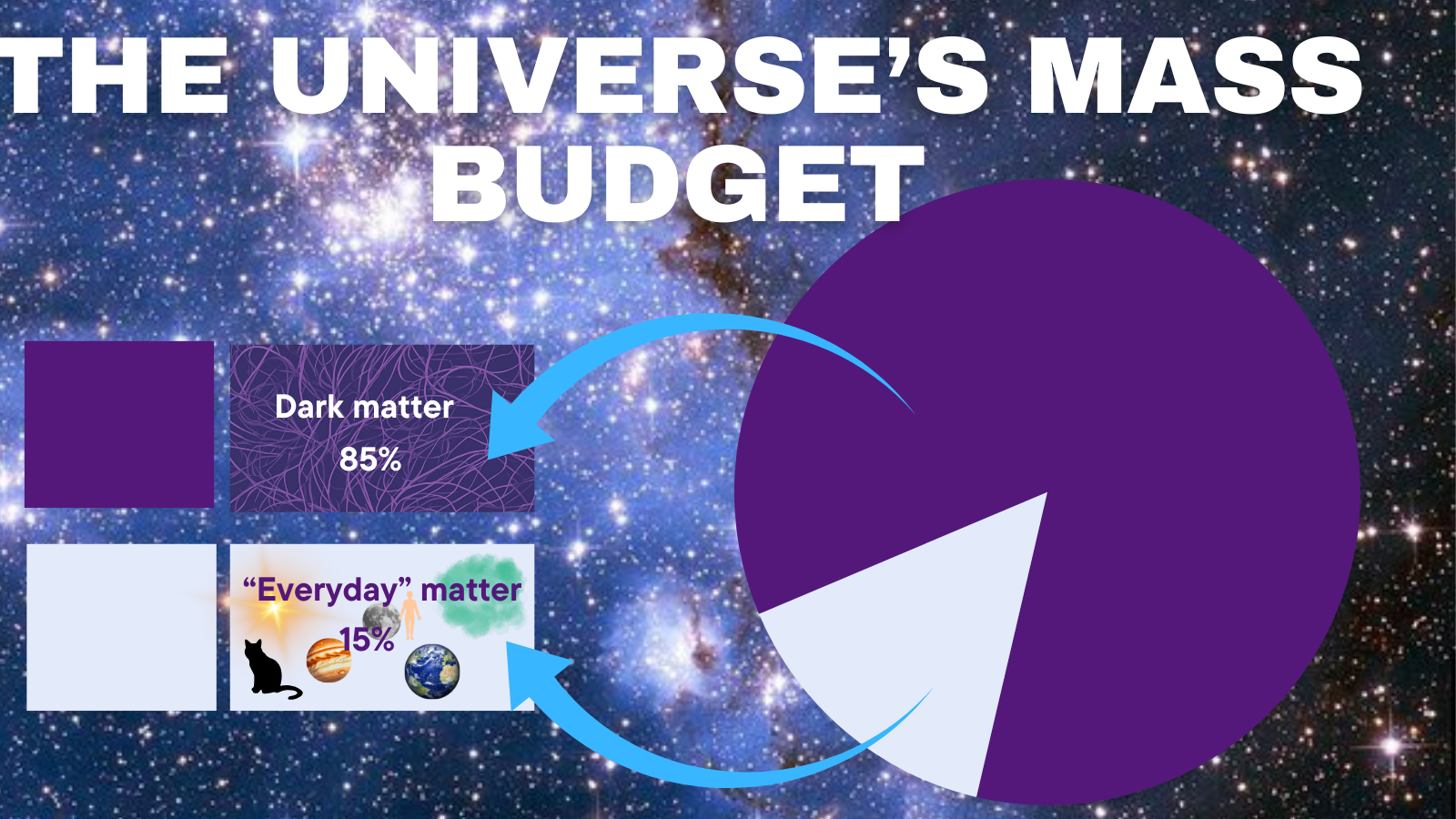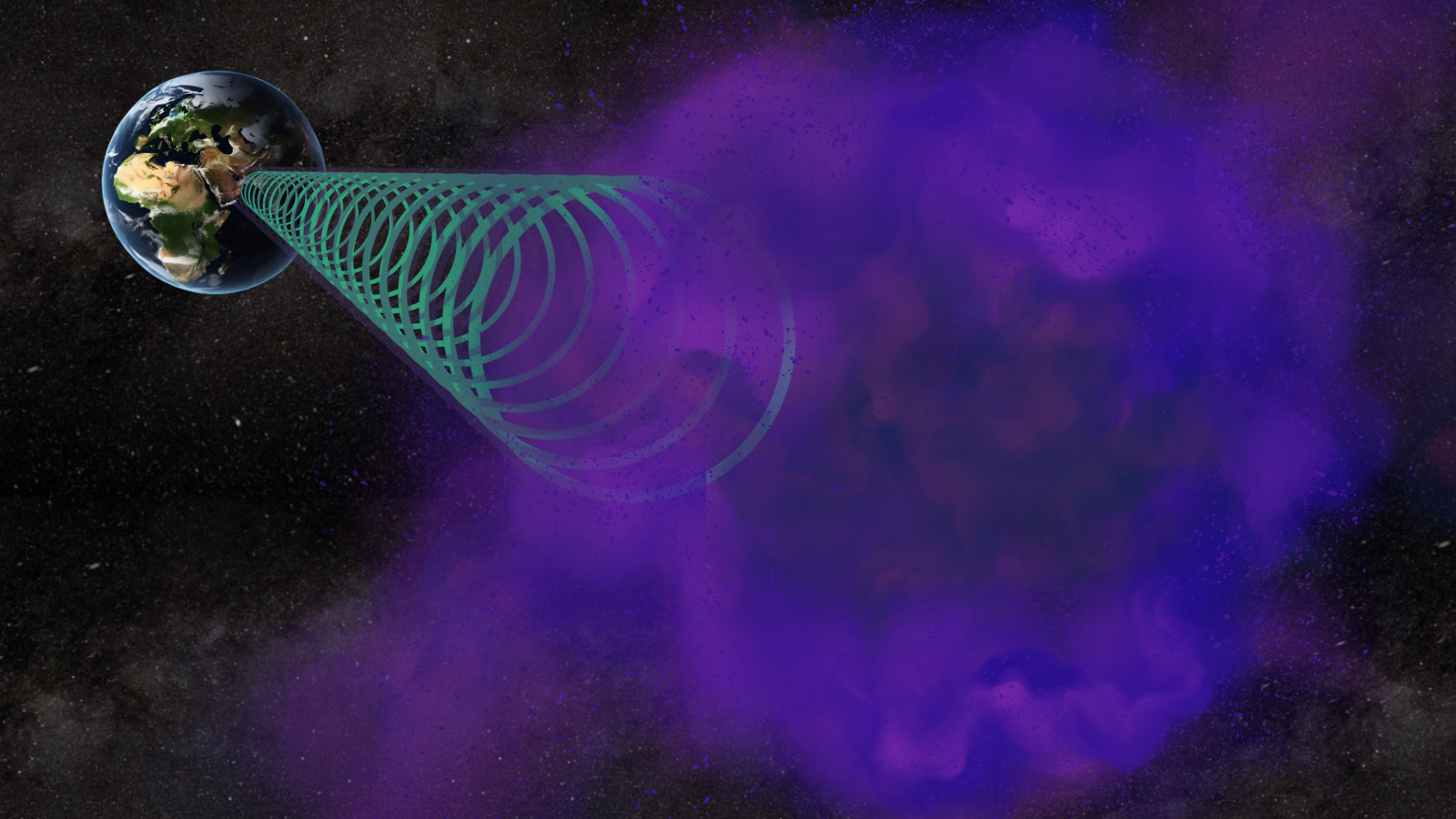The nature of dark matter has confounded scientists for decades, but a new development could help resolve this mystery within the next 15 years.
Researchers have developed an "axion quasiparticle" that could become the basis of a cosmic car radio of sorts, and this "radio" should have the ability to tune in to the frequency of axions. Axions are hypothetical particles that are leading candidates for dark matter.
The team behind the idea says that, if it were made, the device would become the most accurate dark matter detector yet. This makes the researchers confident that the true nature of dark matter won't elude scientists for too much longer.
"To detect the axion, we need to tune into its frequency. When we do, the signals in experiments 'resonate' and get more powerful," team member David "Doddy" Marsh of King's College London told Space.com. "We don't know the frequency, so we need to keep tuning and trying different ones, like searching for a good radio station when you arrive in a different country or drive long distances."
You're listening to dark matter FM!
Scientists have to be ingenious in their efforts to detect dark matter because, despite comprising around 85% of the stuff in the universe, it doesn't interact with light — or, more accurately, any electromagnetic radiation — and thus is effectively invisible to us.
Because the electrons, protons and neutrons that comprise the atoms that make up everyday matter in stars, planets, moons, our bodies and everything else we see around us do interact with light, scientists know dark matter must be something else. This has spurred a search for particles outside the "particle zoo" of the Standard Model of particle physics. After the discovery of the Higgs Boson at the Large Hadron Collider (LHC) in 2012 completed the Standard Model, focus really shifted to hypothetical particles beyond this model. Particles like the axion.
Axions are currently considered the leading candidates in the hunt for dark matter. They're incredibly weakly interacting particles with a tiny mass, but can still generate gravitational effects that allow researchers to infer the particles' presence.
"Axions have been good dark matter candidates since the 1980s, but they have such weak signals that we did not have the technology to look for them. Until 2012, we were rightly focusing on colliders and detecting the Higgs Boson." Marsh said. "People were working hard in the background on axion detection during this whole time, and finally in 2010, the Axion Dark Matter Experiment (ADMX) reached sensitivity to the 1980s axion models, and all of a sudden, it was game on.
"We had the technology."

With the Higgs boson found — and no other new particles or dark matter candidates, such as Weakly Interacting Massive Particle (WIMP), showing up at colliders like the LHC, — Marsh explained that a lot of other people joined the axion-hunting game.
"I started my Ph.D. on axions in 2009," he said. "We've got a lot of new ideas in the last decade, and that's why it is exciting."
That brings us to the latest development presented by Marsh and colleagues.
Hunting axions with 'quasiparticles'
The foundation of the team's dark matter detector is the development of an axion quasiparticle using a material known for its unique electronic and magnetic characteristics called manganese bismuth telluride.
Scientists use the concept of a "quasiparticle" to describe the behavior of a group of interacting particles as though they were a single particle. For example, the characteristics of electrons flowing through a semiconductor can be described as an electron quasiparticle.
This axion quasiparticle is designed in such a way that its frequency can be transmitted into space using a much larger piece of axion quasiparticle material — a frequency that would hopefully match up with actual axions.
When the detector identifies and "tunes in" to that frequency, the axion quasiparticles would emit tiny amounts of light.

The experiment operates at the highest terahertz frequencies, which many scientists theorize is the most promising frequency range within which to hunt for axions.
"This experiment would work at a high frequency that other methods would find difficult, and if we are lucky and nature has put the axion at our frequency, then we will find it," Marsh said. "It's a big range, but a finite one, and one where we have ideas for technology to look for axions in every different band. But it's our one where we are looking at this higher, potentially more probable range."
Marsh predicts that a fully operational prototype of the dark matter detector could be up and running by 2030, leaving the researchers another 10 years to make a positive axion detection.
"There would be some years doing designs, raising money, and building a full-scale experiment, which would cost tens of millions," he continued. "Then we think we would need at least 3 years to do the experiment itself.
"Of course, we could get lucky and detect dark matter in our first prototypes, but 15 years is a ballpark to do everything possible with this method."
One axion to rule them all?
Even if the team's method manages to detect an axion, there will still be plenty of questions to answer about dark matter. For example, this hypothetical particle suspect may not be acting alone.
"We would need to work out if dark matter was just one thing or many. There could be many types of axions, just like we have three types of neutrinos, for instance, and each type could make up just a fraction of the dark matter," Marsh said. "There would also be open questions about exactly how the axion was produced in the early universe, or what other particles it couples to. There is a well-developed set of ideas about what we would do 'post-discovery' with the axion, but it would be a fundamentally massive step."
Additionally, axions have been proposed as solutions to other cosmic mysteries, but if this is the case, that too requires the detection of different flavors of these hypothetical particles. For instance, axions could explain why recent results have indicated that the strength of dark energy, the strange force that causes the expansion of the universe to accelerate, is changing.
"One type of axion could explain the 'dynamical dark energy' seen in the Dark Energy Spectroscopic Instrument (DESI) results; another type is a good candidate to explain cosmic inflation," Marsh explained. "There is not 'one axion to rule them all,' you always need a different one, a different frequency, for each problem."
That all counts on the success of this axion-quasiparticle detector, but Marsh has considered the next steps if this experiment fails to detect axions or if the axions it finds are too scarce to fully account for dark matter.
"If the axion is, say, only 10% of the dark matter, we wouldn't find it in the first round of experiments, and we'd have to go back to every frequency and look harder," Marsh said. "I think once you get below the 10% mark, the axion could exist, but it wouldn't be 'the' dark matter.
"Any one of the many other types of axion, which in string theory could be hundreds, could be the dark matter, and some of them are more difficult to find — although we are looking for all of the ones we can."
The team's research was published in the journal Nature on Wednesday (April 16).









 English (US) ·
English (US) ·